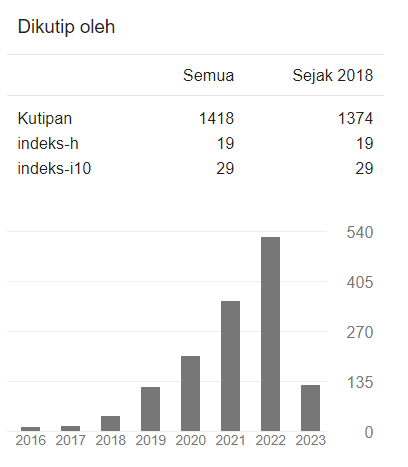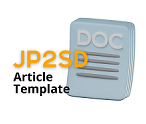Submissions
Submission Preparation Checklist
As part of the submission process, authors are required to check off their submission's compliance with all of the following items, and submissions may be returned to authors that do not adhere to these guidelines.- The submission has not been previously published, nor is it before another journal for consideration (or an explanation has been provided in Comments to the Editor).
- The submission file is in Microsoft Word, RTF, or WordPerfect document file format.
- Where available, URLs for the references have been provided.
Reviewer
Sa'dun Akbar, Pendidikan Guru Sekolah Dasar Universitas Negeri Malang, Indonesia
Endang Poerwanti, Pendidikan Guru Sekolah Dasar Universitas Muhammadiyah Malang., Indonesia
Murfiah Dewi Wulandari, Psikologi Pendidikan. Universitas Muhammadiyah Surakarta. Jawa Tengah, Indonesia
Endang Widi Winarni, Primary School Teacher Education. Universitas Bengkulu, Indonesia
Meilani Hartono, Elementary Teacher Education Department, Bina Nusantara University, Jakarta
Widya Karmila Sari Achmad, Elementary Teacher Education. Universitas Negeri Makassar., Indonesia
Erik Aditia Ismaya, Pendidikan Guru Sekolah Dasar Universitas Muria Kudus Kudus-Jawa Tengah, Indonesia
Dhiniaty Gularso, Pendidikan Guru Sekolah Dasar. Universitas PGRI Yogyakarta. Bantul, Yogyakarta, Indonesia
Sri Harmianto, Pendidikan Guru Sekolah Dasar. Universitas Muhammadiyah Purwokerto. Jawa Tengah, Indonesia
Copyright Notice
Authors who publish with Jurnal Pemikiran dan Pengembangan Sekolah Dasar (JP2SD) agree to the following terms:
- For all articles published in Jurnal Pemikiran dan Pengembangan Sekolah Dasar (JP2SD), copyright is retained by the authors. Authors give permission to the publisher to announce the work with conditions. When the manuscript is accepted for publication, the authors agree to automatic transfer of the publishing right to the publisher.
- Authors retain copyright and grant the journal right of first publication with the work simultaneously licensed under a Creative Commons Attribution-ShareAlike 4.0 International License that allows others to share the work with an acknowledgment of the work's authorship and initial publication in this journal.
- Authors are able to enter into separate, additional contractual arrangements for the non-exclusive distribution of the journal's published version of the work (e.g., post it to an institutional repository or publish it in a book), with an acknowledgment of its initial publication in this journal.
- Authors are permitted and encouraged to post their work online (e.g., in institutional repositories or on their website) prior to and during the submission process, as it can lead to productive exchanges, as well as earlier and greater citation of published work (See The Effect of Open Access).

This work is licensed under a Creative Commons Attribution-ShareAlike 4.0 International License.


















